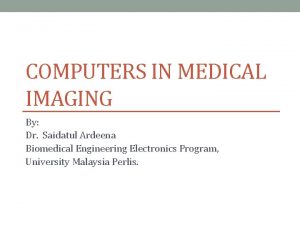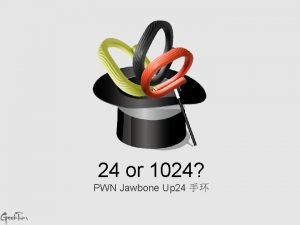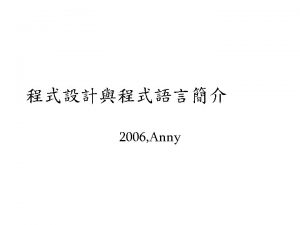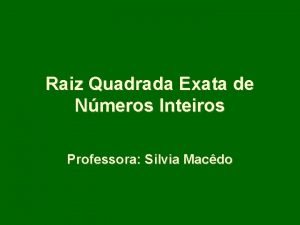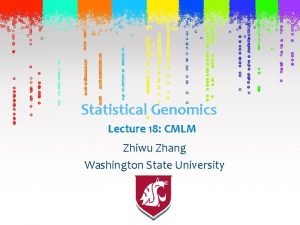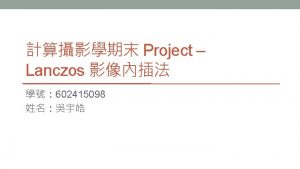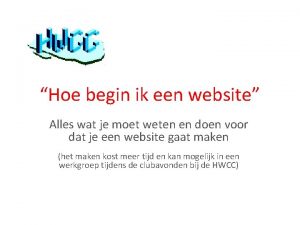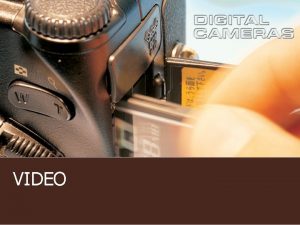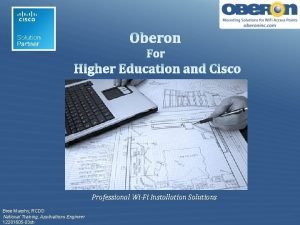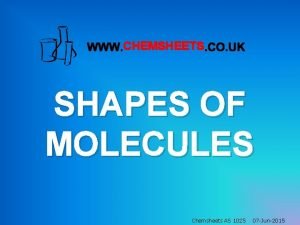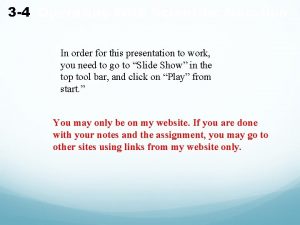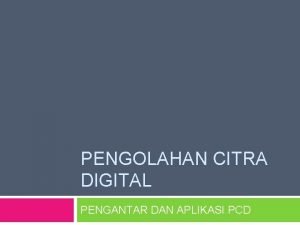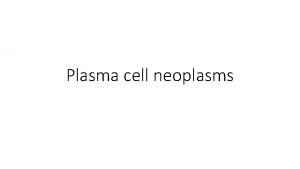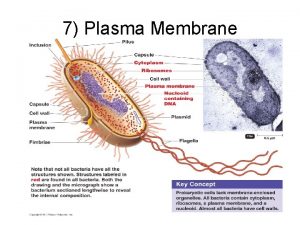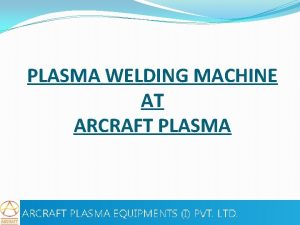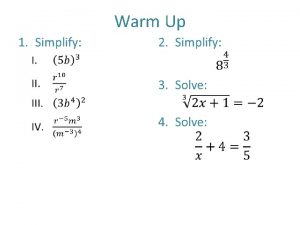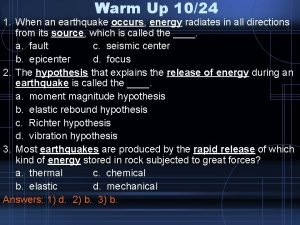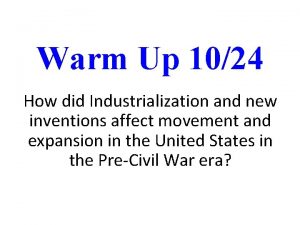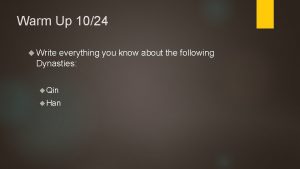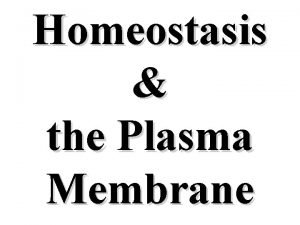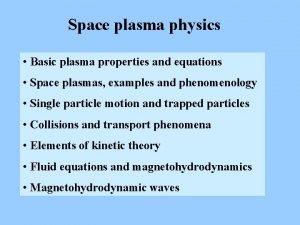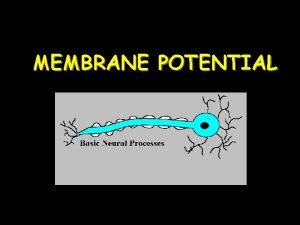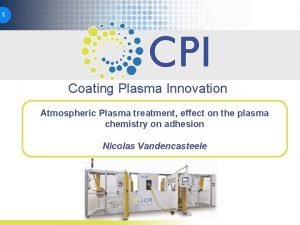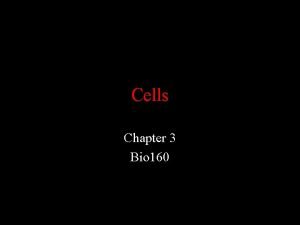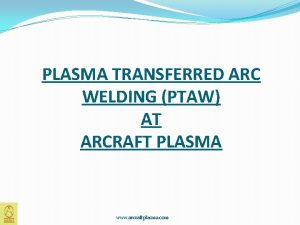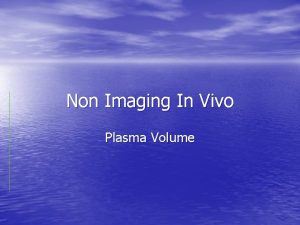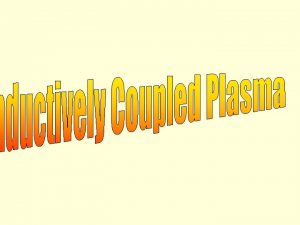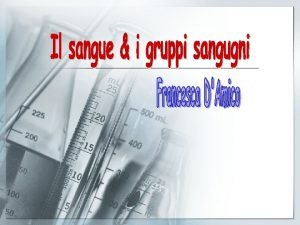Warm Up 1024 25 What makes the plasma





















- Slides: 21

Warm Up 10/24 -25 � What makes the plasma membrane? What makes the heads and the tails unique? � What is passive transport? What types of things can the cells obtain through passive transport?

Warm Up 10/31 -11/3/14 � Good morning/afternoon! Today we will be taking our quarter test. In addition to the quarter test, we will also be checking binders. Please have in your binders, in this order: all warm ups, daily fixes, cell structure and function notes (prokaryote/eukaryote notes), cell parts notes (organelle flashcards), organelle assignment (household items as organelles), transfer of molecules notes, solution problems, hypo-, hyper-, iso-tonic assignment and osmosis egg lab.

Warm Up 10/28 -29 � Please draw a Venn Diagram comparing/contrasting exocytosis and endocytosis. � Describe, in your own words, phagocytosis.

Energy and the Cell Biology 1 Mr. Hedrick, Mrs. Heins

Energy The Ability to do Work � Potential: � Kinetic: energy stored energy in motion

Warm Up 11/4 -5/14 � Create a tree map (example on the board) detailing exocytosis, phagocytosis, and pinocytosis (at least three descriptors in each column. � Give one example of potential energy and kinetic energy.

Energy � Main source of energy on the earth comes from the sun in radiant energy (kinetic energy) � Plants convert this radiant energy to chemical energy (potential energy) using the process of photosynthesis � When animals consume food, the chemical energy is converted into potential energy in the body � When this energy is used to work it becomes kinetic energy (cellular respiration).

Where do living things get energy?

Autotrophs � Primarily plants � Organisms that produce their own food

Heterotrophs � CANNOT make their own food � Obtain energy from the foods they consume

Chemical Energy � Adenosine Triphosphate (ATP) is one of the most important chemical compounds used to store and release energy in the cell. � Adenine + Ribose + 3 Phosphate groups


Energy is Stored in the Cell � When the cell has available energy it can be stored in small amounts as ATP. � Process: The ADP molecule adds another phosphate to it, making it ATP. +

ADP is made into ATP by ATPsynthetase

What are enzymes? � Biological catalysts. This means that without them, the thousands of chemical reactions that happen in cells would not be possible.

Energy is Released � When the chemical bond between the third phosphate group in ATP is broken—ATP becomes ADP and energy is released.

ATP broken to ADP

ATP-ADP Cycle � a) in chemicalese: ATP ----> ADP + energy + Pi � b) in English Adenosine Triphosphate produces Adenosine diphosphate + energy + inorganic Phosphate � a) � b) in chemicalese: ADP + Pi + energy ----> ATP in English: Adenosine diphosphate + inorganic Phosphate + energy produces Adenosine Triphosphate

Create a Flow Map � Using a flow map (class procedures example), show the process of ATP being made and broken down.

Energy from ATP Is used to: � Carry out active transport � Synthesize proteins � Move organelles throughout the cell � Keep the sodium-potassium pump working

Comparing ATP and Glucose ATP � Useful source of energy � Cells only carry a small amount Glucose � Useful source of energy � Stores large amounts of energy
 262144/1024/1024
262144/1024/1024 24*1024
24*1024 1024 bytes
1024 bytes Raiz quadrada exata de números inteiros
Raiz quadrada exata de números inteiros 1024/16000
1024/16000 7000/1024
7000/1024 256 x 1024
256 x 1024 Begin website
Begin website 1024 x 6
1024 x 6 Video adalah
Video adalah Oberon cisco
Oberon cisco Chemsheets shapes of molecules answers
Chemsheets shapes of molecules answers Power notation of 1024
Power notation of 1024 Kuantisasi digitalisasi grayscale berjumlah
Kuantisasi digitalisasi grayscale berjumlah Thiếu nhi thế giới liên hoan
Thiếu nhi thế giới liên hoan điện thế nghỉ
điện thế nghỉ Thế nào là sự mỏi cơ
Thế nào là sự mỏi cơ Trời xanh đây là của chúng ta thể thơ
Trời xanh đây là của chúng ta thể thơ Voi kéo gỗ như thế nào
Voi kéo gỗ như thế nào Sơ đồ cơ thể người
Sơ đồ cơ thể người Tia chieu sa te
Tia chieu sa te Bảng số nguyên tố lớn hơn 1000
Bảng số nguyên tố lớn hơn 1000
